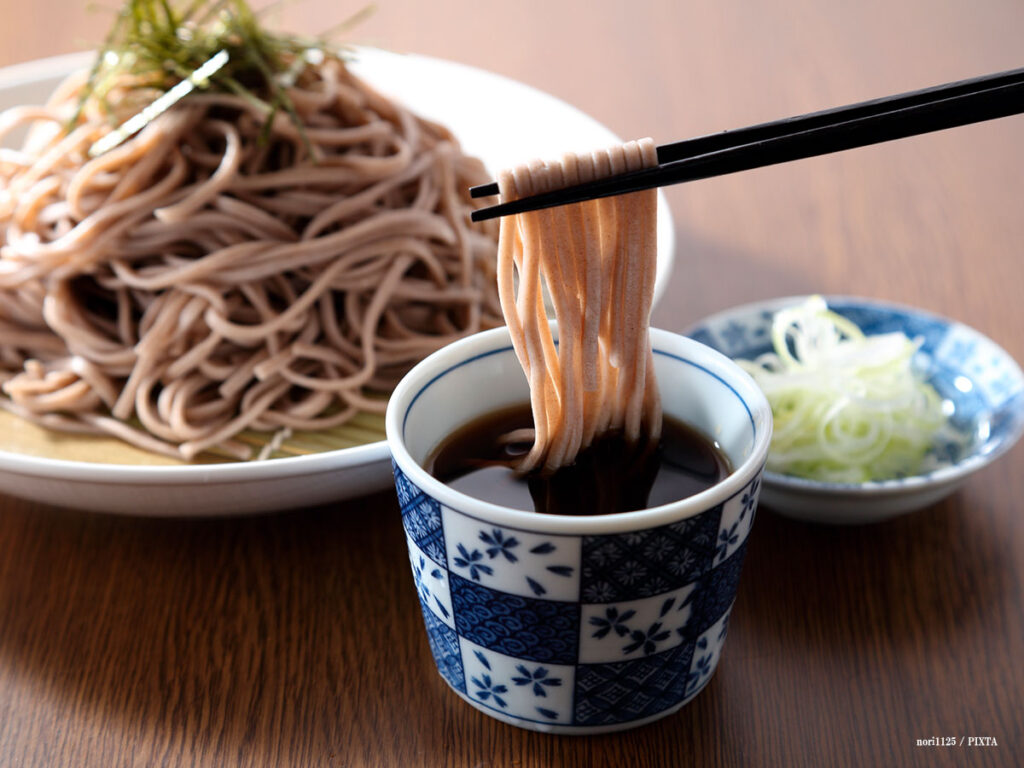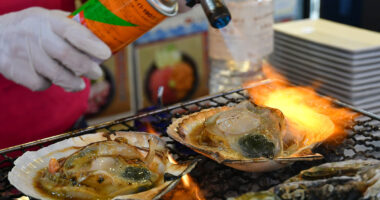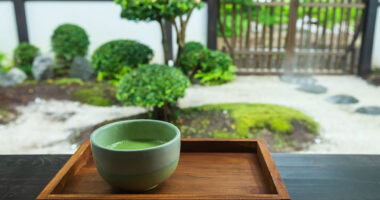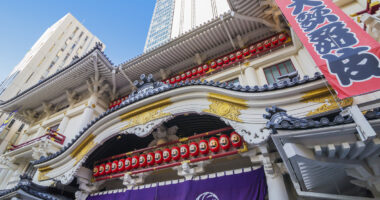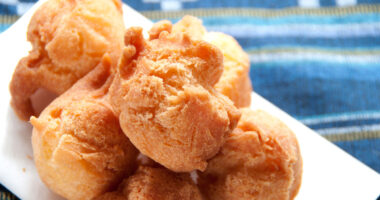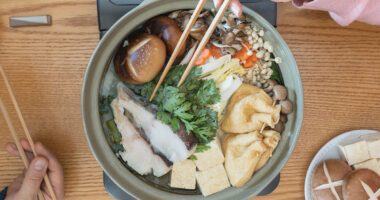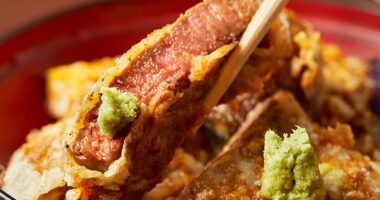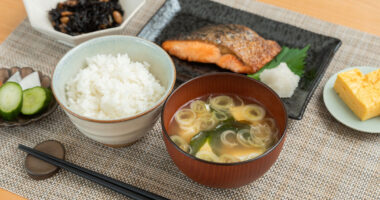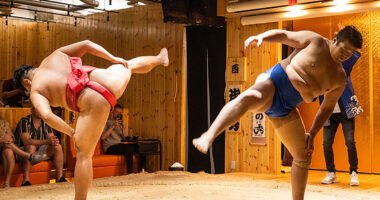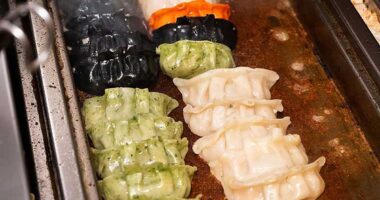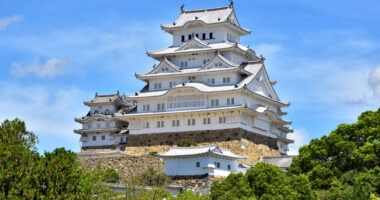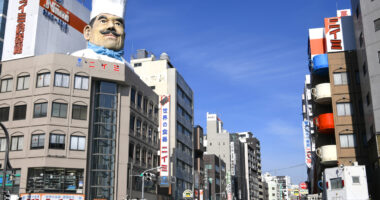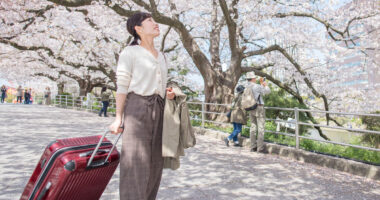With its smooth texture and aroma that deepens with every bite, soba is one of the most delicate and profound dishes in Japanese cuisine.
Everything—from the unique characteristics of buckwheat flour by region, to the ingredients used in the dashi broth, to the skill of the artisan—comes together to define its flavor.
Soba became widespread during the Edo period (1603-1868) and has since become a cornerstone of Japanese food culture, standing alongside tempura and sushi as one of its most iconic dishes.
Soba in Japanese cuisine: history and culture
There are several theories about the origins of soba, but it’s said that the noodle form as we know it today was established and popularized during the Edo period.
Before that, soba was eaten in a different form—more like dumplings or mochi—made by kneading buckwheat flour with water.
Once soba began to be served as a noodle dish, its short cooking time made it a hit among the people of Edo (old Tokyo), who loved that it was quick, tasty, and filling. This is how soba became a beloved everyday food for the common people.
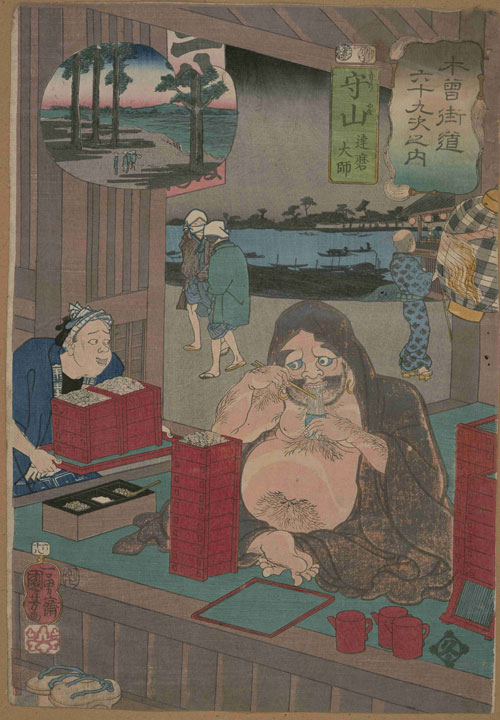
Source: National Diet Library Digital Collection
Soba is also deeply connected to Japanese culture. A prime example is toshikoshi soba (year-crossing noodles), which became established during the Edo period.
Toshikoshi soba, eaten on December 31—the final day of the year—for good luck, remains a cherished Japanese winter tradition to this day.
The dish carries wishes for a long life—like the long, thin shape of soba—and symbolizes cutting off misfortune, as soba noodles break easily.
Soba also plays a role in other aspects of Japanese culture, such as chaji meals served during tea ceremonies and in shōjin ryōri (Buddhist plant-based cuisine). It’s a dish deeply woven into the fabric of Japanese life.
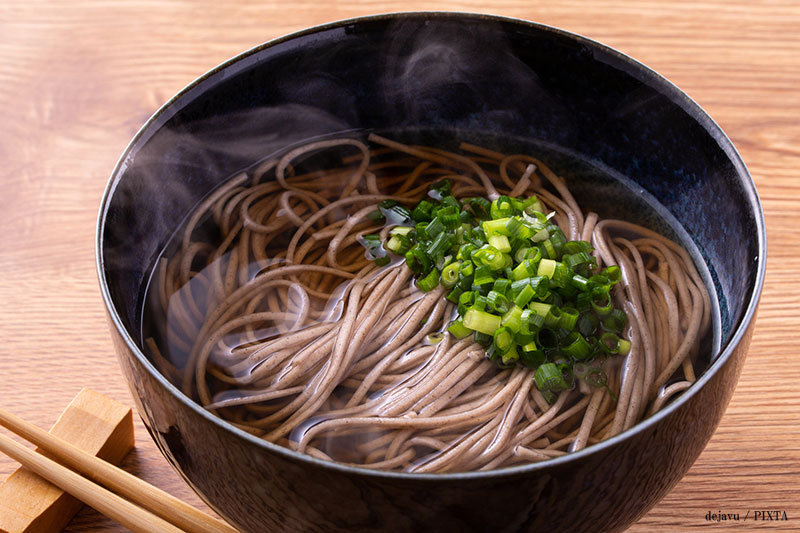
Photo for illustrative purposes
Soba vs. udon: what’s the difference?
While soba took root during the Edo period, udon had already spread earlier.
Though both are iconic Japanese noodle dishes, they differ significantly.
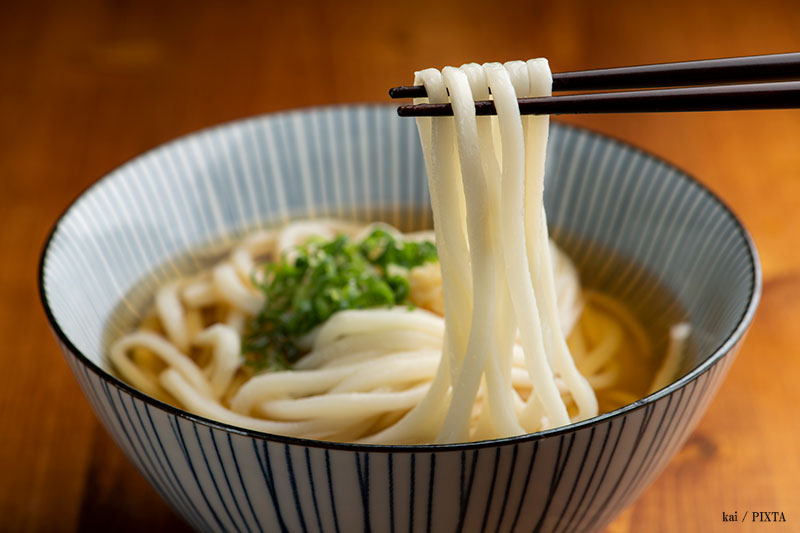
Photo for illustrative purposes
The main differences lie in the shape of the noodles, the ingredients, and the texture.
Soba is usually thinly cut, while udon tends to be thick. Of course, there are exceptions—Inaniwa udon, a specialty of Akita Prefecture, is a type of thin udon.
Conversely, in the case of soba, Echizen soba from Fukui Prefecture is known for its thick noodles.
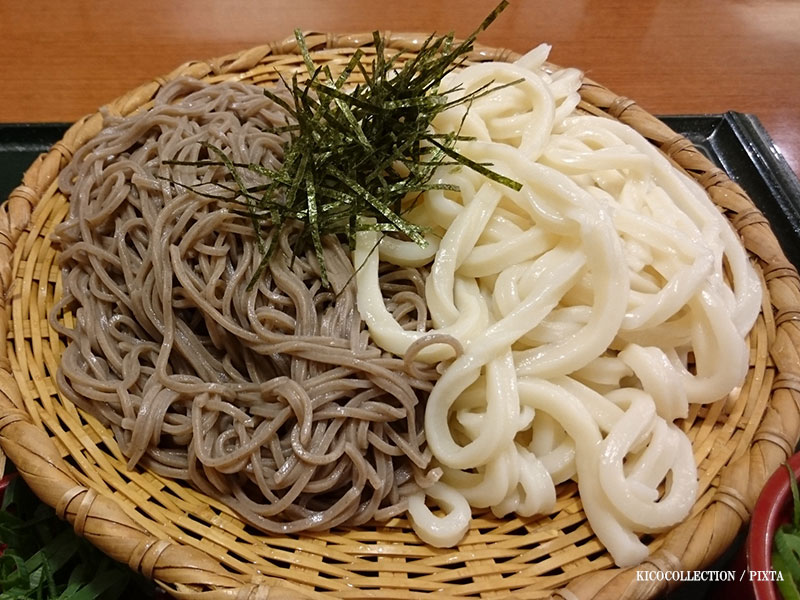
(left) soba, (right) udon
Soba and udon may seem similar, but they differ in ingredients as well.
Soba is made primarily from buckwheat flour, often mixed with wheat flour. The ratio of these flours determines the type: noodles made with 80% buckwheat and 20% wheat flour are called ni-hachi soba, while those made with 100% buckwheat flour are known as jūwari soba.
Udon, on the other hand, is made entirely from wheat flour, which gives it its distinct chewy texture.
The difference in ingredients also affects the texture of soba and udon, which naturally changes what you focus on when enjoying each noodle.
Soba has a distinctive flavor, and part of the enjoyment is savoring the fragrant aroma that rises from the noodles as you eat. The texture—especially with juwari soba—can be slightly coarse due to the buckwheat flour.
Udon’s wheat-only composition gives it a smooth, elastic texture and a pleasing slurp.
Health benefits of soba: why you should add it to your diet
Soba’s popularity among the people of Edo is thought to be closely linked to its nutritional value.
It’s a nutrient-rich food that contains a good balance of vitamins B1, B2, and B6, along with rutin, a type of polyphenol. Soba is also high in insoluble fiber, which supports gut health and digestion.
In an age when food culture wasn’t as developed as it is now, soba was prized for being both tasty and nourishing.
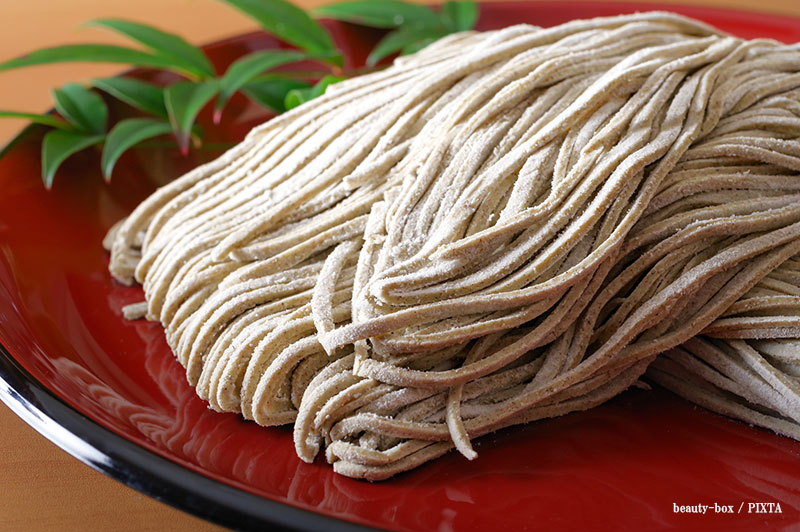
Photo for illustrative purposes
That’s not all—it can also be a great option for vegans.
Made from buckwheat flour, wheat flour, and water, soba contains no animal product. Juwari soba, made with only buckwheat and water, is even gluten-free.
Vegan and gluten-free options at restaurants are limited, however. Soba broth (both dipping broth and soup) is often made using dashi from seafood, and it’s not uncommon for meat-based toppings or ingredients to be added.
Soy sauce—an essential seasoning for making soba broth—typically contains wheat as one of its main ingredients.
That said, at home, you can still enjoy soba by using vegan or gluten-free seasonings to make the broth, and limiting toppings to boiled or grilled vegetables. Give it a try!
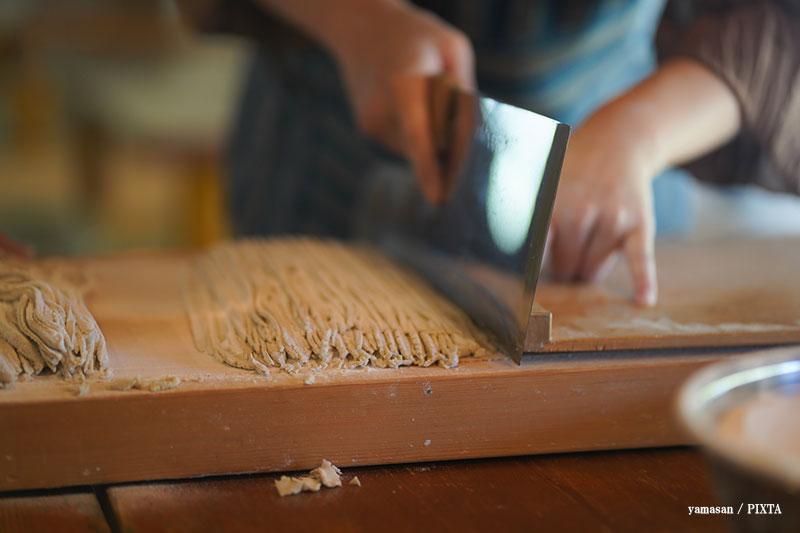
Photo for illustrative purposes
A beginner’s guide to soba: eating soba in Japan for the first time
One of soba’s charms is how it can be enjoyed either hot or cold, depending on the season or mood—each offering its own unique experience.
You can also vary the flavors by changing up the toppings and condiments.
How to enjoy hot and cold soba
Most soba restaurants serve both hot and cold soba.
While names vary by restaurant, hot soba is typically called kake soba, served in a hot broth with noodles already in it.
Cold soba, like mori soba, seiro soba, or zaru soba, is served with noodles and dipping sauce separately. You dip the noodles into the sauce before eating.
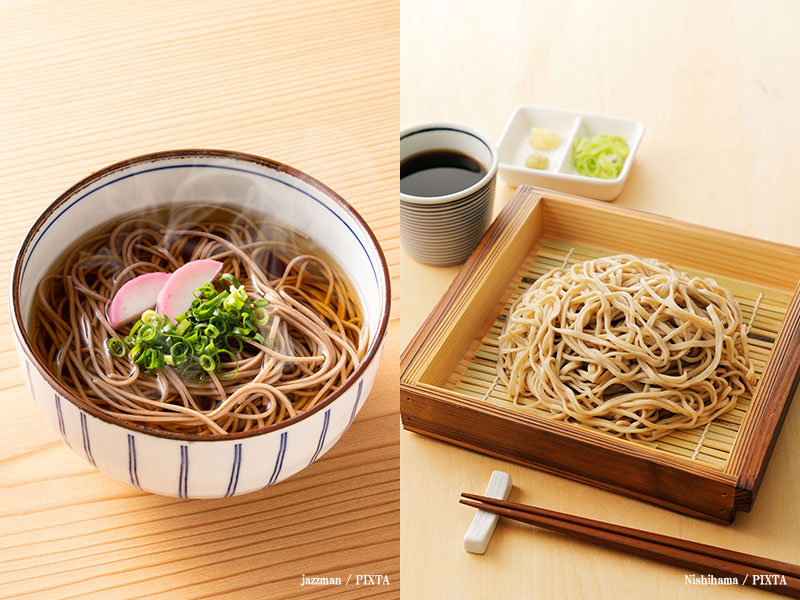
(left) hot kake soba, (right) cold seiro soba
Hot soba offers a rich, comforting aroma from the rising steam of the dashi broth, and the harmony between the noodles and the soup is especially satisfying.
On the other hand, cold soba is perfect for hot days. Chilled in cold water, the noodles highlight their natural aroma and texture, and dipping them into the tsuyu (soba dipping sauce) makes for a refreshing and crisp experience.
Best toppings for enhancing soba’s flavor
The flavor of soba changes depending on whether it’s served hot or cold—and toppings can further transform the overall taste.
There are many different types of toppings, but let’s start with the basics: the standard condiments known as yakumi.
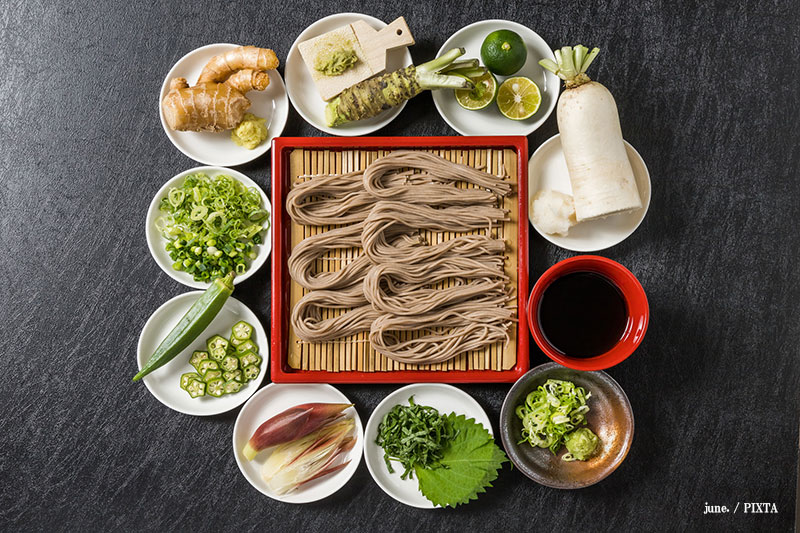
Photo for illustrative purposes
Condiments truly shine when paired with cold soba, where their impact on flavor is most noticeable.
Wasabi, green onions, grated daikon, and nori seaweed are classic accompaniments that enhance the taste of soba, adding subtle variations based on personal preference.
They not only highlight the aroma and smooth texture of the noodles, but also add refreshing accents that bring out new flavors with each bite.
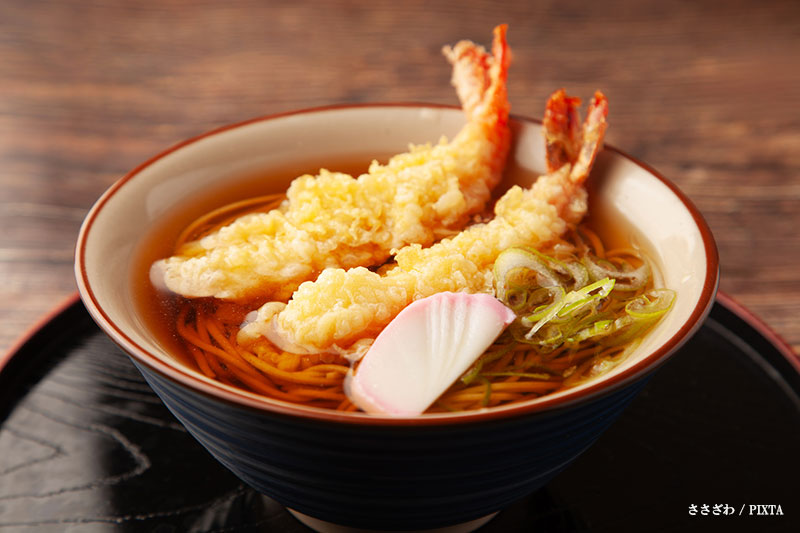
Photo for illustrative purposes
Hearty toppings like tempura truly stand out when served with hot soba.
The crispy aroma of the tempura batter and the savory flavors of the ingredients blend into the broth, adding depth to the overall taste of the soba.
The greatest appeal of hot soba lies in how a single bowl delivers both satisfying fullness and rich, layered flavors from the ingredients.
5 must-visit soba restaurants in Tokyo
Soba, which gained popularity in Edo, continues to evolve—with modern takes and creative approaches adding new charm to this classic dish.
From shops carrying on tradition to those serving soba with modern arrangements, Tokyo’s soba scene is diverse. We’ve carefully selected Tokyo soba shops that showcase distinctive craftsmanship.
KYOTO SARYO SUISEN: matcha-infused tea soba
“KYOTO SARYO SUISEN Shinjuku” is one of the few places offering 100% buckwheat matcha soba. The interior has a calm, traditional Japanese atmosphere reminiscent of a tea room, providing a peaceful escape from the city’s hustle and bustle.
The soba served here is juwari soba—made entirely from buckwheat flour without any binding agents—offering a smooth texture and firm bite.
They also offer matcha-infused juwari soba, where the aroma of buckwheat and the flavor of matcha blend together in perfect harmony.
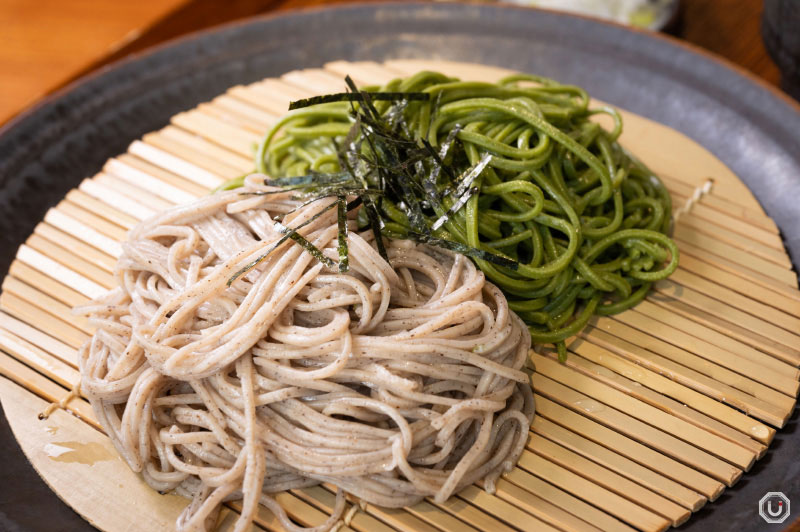
Matcha Juwari and Juwari Combination Soba at KYOTO SARYO SUISEN Shinjuku
Teuchi Soba Keyaki: hot and delicious Kamonanban-soba
At “Teuchi Soba Keyaki,” the restaurant’s passion for soba is clear in every step, as all noodles are handmade by skilled chefs without the use of machines.
The process begins with grinding buckwheat kernels—still with their husks—using a stone mill right in the shop. Throughout every stage of soba-making, the craftsmen’s years of experience and refined techniques truly shine.
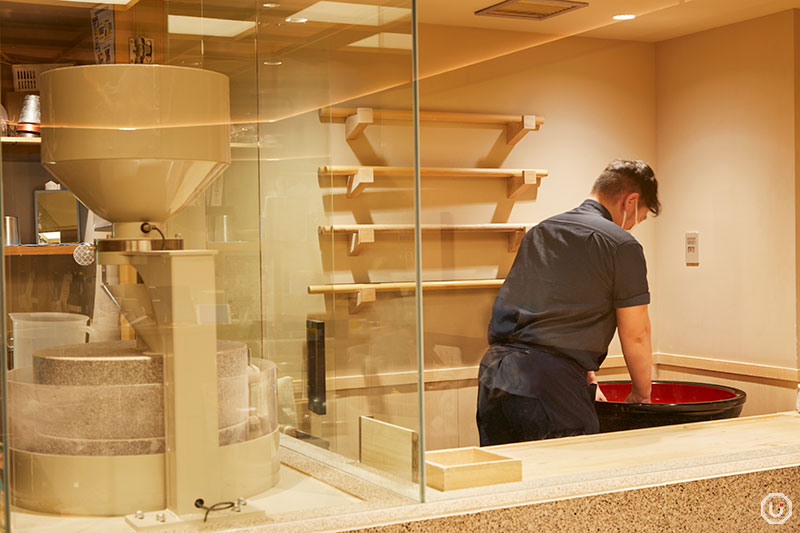
Interior of Teuchi Soba Keyaki
The hot soba broth, prized for its rich aroma, is made from a blend of dashi that uses plenty of bonito and mackerel flakes.
Their signature “Kamonanban-soba,” topped with thick-cut duck meat and meatballs made from a mix of ground chicken and duck, is a must-try dish.
The savory flavor of the duck melts into the sweet, fragrant broth, creating an exceptional taste that perfectly highlights the appeal of hot soba.
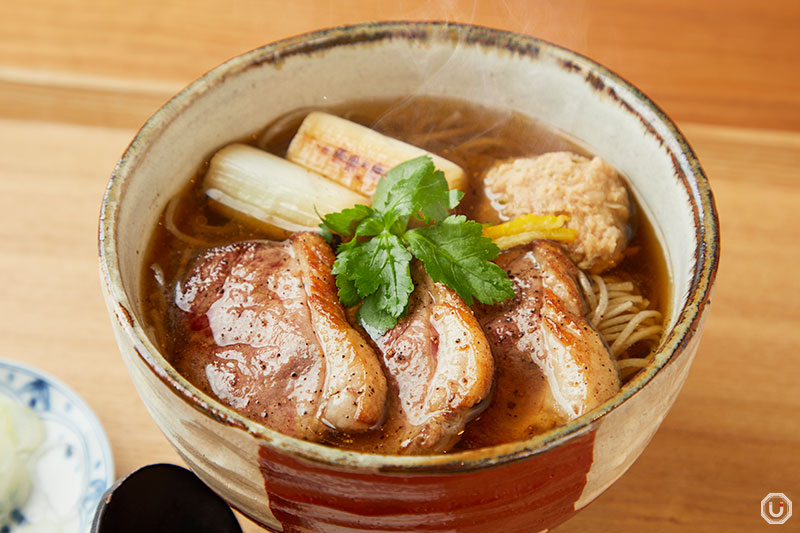
Kamonanban-soba at Teuchi Soba Keyaki
Sobadokoro Kameya: standing soba restaurant with Edo-era roots
During the Edo period, many more soba shops lined the streets, including stalls where people could easily enjoy soba on the go.
Most seats were counter-style, and these quick, standing-eating establishments—known today as tachigui soba (standing soba restaurants)—were essentially the Edo-period equivalent of modern food stalls.
With their fast service from order to delivery, these spots offered a speedy dining experience much like the stalls of that era.
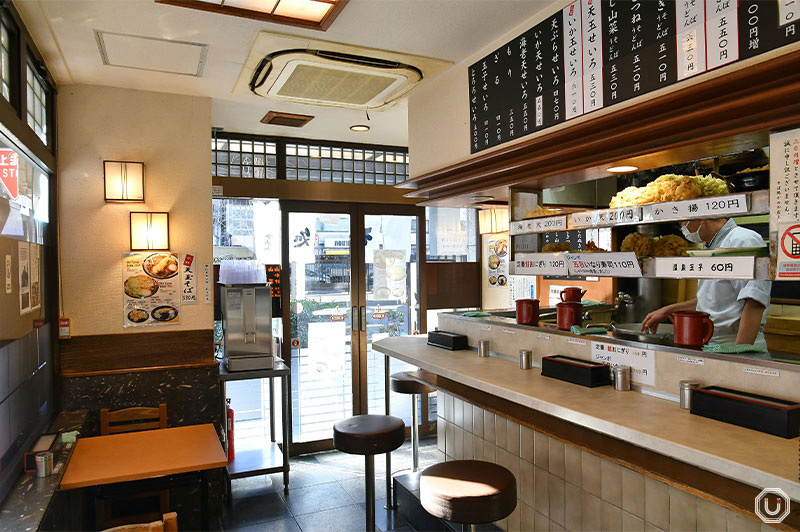
Chairs are also available inside Sobadokoro Kameya
“Sobadokoro Kameya,” with multiple locations in Tokyo including near Ueno and Okachimachi, is a renowned standing soba shop that has been serving customers for over 50 years.
Despite its affordable prices starting at just 350 yen (tax included), the flavor is authentic and satisfying.
The rich dashi broth is made from a blend of ingredients like bonito flakes, sōda-bushi (bonito flakes made from sōda skipjack tuna), and mackerel flakes, perfectly complementing the firm, chewy soba noodles.
Even with toppings like shrimp tempura or kakiage (mixed-ingredient tempura fritter), a bowl costs only around 500 to 600 JPY—making it a beloved and budget-friendly choice for locals!
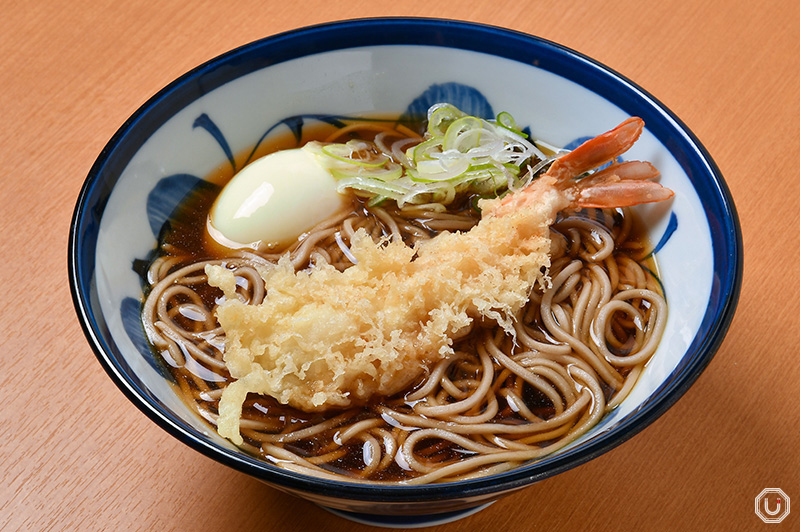
Ebi-Tama Soba at Sobadokoro Kameya
SUBA VS: soba meets wine and craft beer
With concrete walls and only standing counters, the stylish interior of “SUBA VS” turns the image of standing soba shops on its head.
The creative soba dishes at “SUBA VS” are truly one of a kind, including specialties like “Shimane’s local freshwater clam and blue mandarin oil soba” that you won’t find anywhere else. You won’t find these unique flavors anywhere else.

Shimane’s local freshwater clam and blue mandarin oil soba at SUBA VS
The extensive selection of craft beers and wines makes this place truly unique. The first floor operates as a standing soba shop, while the second floor serves as a wine shop and bar.
While preserving the traditional appeal of soba, this innovative establishment introduces a new dining culture by pairing soba with wine and craft beer.
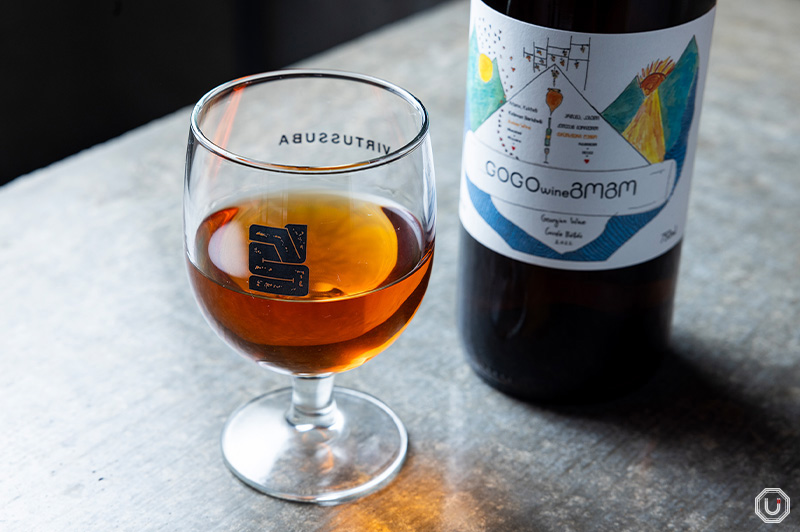
Today’s natural wine at SUBA VS
Kinojiya: toppings that transform soba
“Kinojiya” in Ueno is a restaurant that expands the possibilities of soba with its unique toppings.
The restaurant’s standout dish is the “Jalapeño Hiyakake,” featuring cold kake soba topped generously with Kujō green onions and drizzled with a sesame sauce blended with jalapeños.
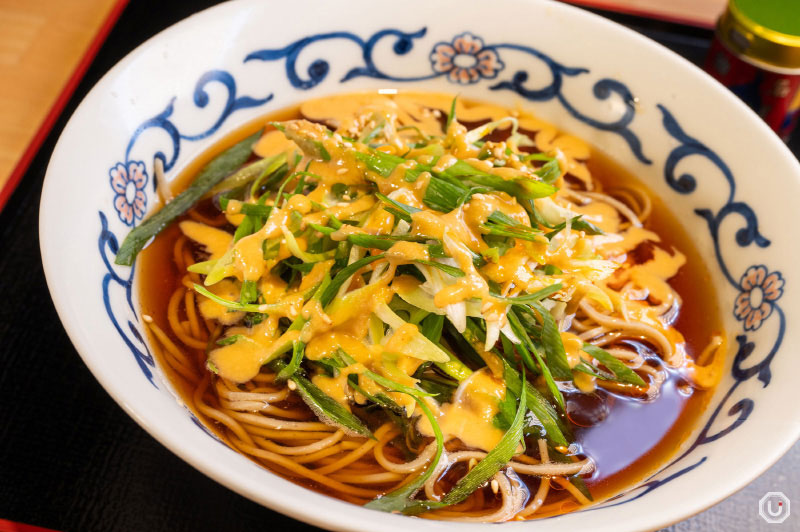
Jalapeño Hiyakake at Kinojiya
The slight bitterness of Kujo green onions enhances the sweetness of the broth, creating an excellent balance. Combined with the spicy kick of the sesame sauce, it offers a truly unique flavor.
The fragrant aroma of the sesame sauce, which lingers pleasantly through the nose, adds a delightful accent to the simple taste of the soba.
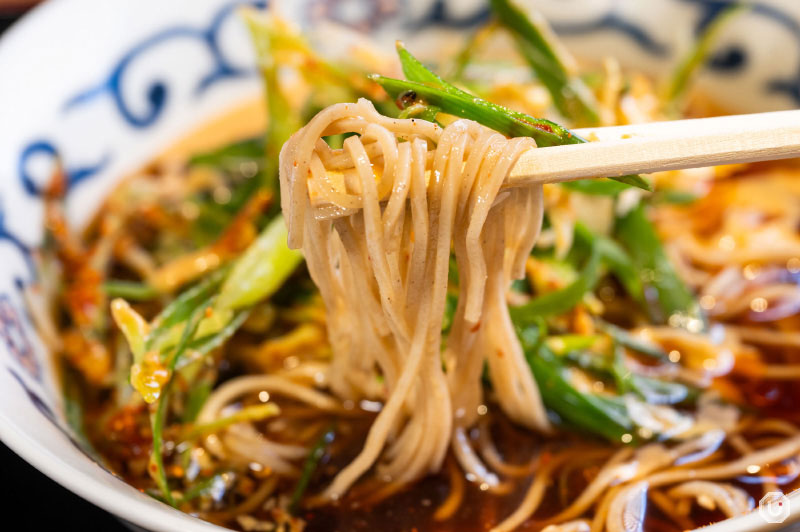
Jalapeño Hiyakake at Kinojiya
※Information in this article is current as of June 2025
